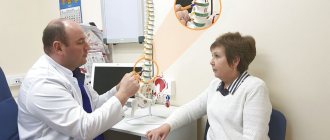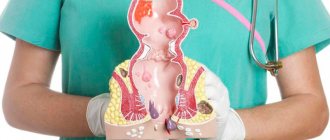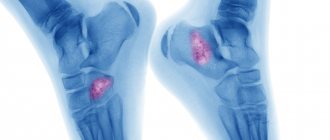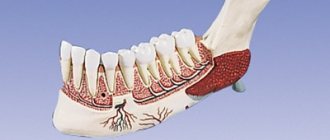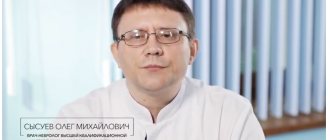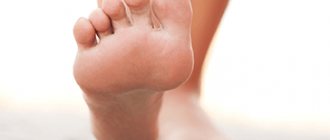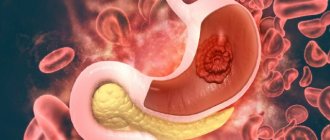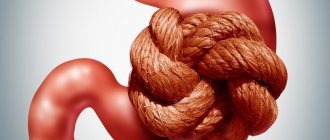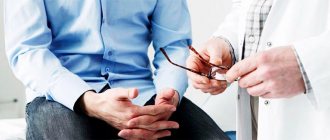- When to contact
- Types of procedure
- What diseases does it treat?
- Diagnostics
- How does the session work?
- Contraindications
- Advantages
Manual therapy is the use of hands for the purpose of therapeutic effects on the patient’s body using special techniques and techniques.
The goal of treatment is to adapt the body to stress, increase the body’s adaptive capabilities and, as a consequence, reduce pain, increase mobility in the spine and joints. All techniques are performed by a doctor of manual therapy with special education and experience. The complex of techniques of a chiropractor is based on techniques of manual influence on the body to correct biomechanical disorders. Manual influence is based on the principles of neurology, orthopedics, and neurophysiology. The difference from conventional massage lies in the impact not only, and not so much on soft tissue, but also on joints, intervertebral discs, internal organs, and cranial rhythm.
Clinic "CHILDHOOD Plus" offers to make an appointment with a chiropractor. The specialist will conduct a diagnostic examination, examination, and develop individual comprehensive treatment and rehabilitation schemes. We guarantee systematic monitoring of treatment results, gentle effects and high benefits of treatment.
When should you see a doctor?
Disorders treated by manual therapy and osteopathy: pain in the head, back, neck, joints, and abdomen. Pain, for example, in the heart region, leg, arm, shoulder, may be caused by diseases of the spine. If you have the following symptoms, this is a reason to contact a chiropractor:
- Discomfort and pain syndromes that restrict movement in the lower back, shoulder, pelvic joints, elbows, knees
- Headache
- dizziness when moving the neck;
- visual impairment;
- problems falling asleep;
Manual therapy will improve the mobility of functional blocks, relieve pain, solve joint problems, and reduce the manifestations of vertebrogenic diseases associated with the spine, scoliosis, and hernia. If you notice such symptoms, we advise you to consult a doctor.
What to do if you have back problems?
If symptoms of osteochondrosis appear, then at the first stage it is necessary to be examined by a qualified specialist. This is necessary to determine neurological and orthopedic disorders, order the necessary studies for correct diagnosis and determine treatment tactics. An incorrect diagnosis can sometimes lead to very serious complications!
Most patients understand perfectly well that they will be treated not by the name of the technique or the name of the medical institution, but by an ordinary practicing doctor. The real result of treatment depends on his professional qualities. Hand healing usually requires experience and care. In some cases there are contraindications that need to be recognized and properly assessed.
In connection with the above, it is important to clearly understand that only a certified doctor who has undergone special training and has the appropriate certificate has the right to carry out such treatment.
Types of manual therapy
Chiropractors from our clinic use classical + soft treatment techniques. The doctor will offer several methods for treating the spine, joints, and organs:
- Myofascial - the specialist interacts with the skin, fatty tissue, ligaments, and muscles. This technique reduces pain, improves body symmetry, and models posture.
- Arthro-vertebral manual therapy is aimed at working with the spinal motion segment, with herniated intervertebral discs, and improving joint function. Reduces muscle spasms, restrictions of movement in the joint, compression of nerve roots.
- Cranial - affects the bones of the skull. Work in the cranial direction consists of treating the head, jaw, ENT organs, reducing dizziness, headaches, restoring blood circulation, and normalizing intracranial pressure.
- Visceral—involves an effect on the abdomen and internal organs, used for organ prolapse, adhesions, and neurological syndromes.
What it is?
The answer to the question: “what is manual therapy” can be answered very briefly: “This is treatment with your hands.”
The Latin word "manus" means hand, the Greek word "therapeia" means treatment. The essence of this treatment is a local dosed effect on the joints of the spine and limbs, muscles, ligaments, fascia in order to eliminate restrictions (blocks) that prevent their full functioning. It should be noted that the health of the nervous system largely depends on how well the musculoskeletal system works.
Manual therapy was introduced into the list of medical specialties by order of the Ministry of Health of the Russian Federation No. 365 dated December 10, 1997. It includes two main sections: diagnosis and manual treatment itself.
This medical direction combines the achievements of neurology, neurophysiology and orthopedics. Due to its effectiveness, it has become attractive to other medical specialties.
What diseases can be treated with manual therapy?
Cranial, visceral, vertebral, and other methods of manual therapy can cope with a wide range of diseases, including obvious ones, for example, spinal hernia or scoliosis, lordosis, kyphoscoliosis, and specific ones, in particular hypertension, intercostal neuralgia, pulmonary diseases caused by changes in structures spinal column.
What diseases does a chiropractor treat:
- osteochondrosis
- arthrosis, arthritis
- glenohumeral periarthritis;
- neuralgia of the sciatic nerve;
- vertebral artery syndrome;
- lumboischialgia, lumbodynia;
- cervicalgia;
- migraine;
- listhesis, retrolisthesis;
- radiculitis.
Brief information
A chiropractor is a specialized therapeutic specialist. Engaged in direct therapy of the spine, muscles, and joint apparatus. Affects painful structures exclusively through the hands. Similar methods of influence have been used for a long time, but they became a separate industry relatively recently. The name of the specialist has Greek roots. The literal translation is “hand therapy.”
The services of a chiropractor are unique in their kind. It is possible to eliminate symptoms that traditional, standard medicine had no effect on.
Diagnostics
The basis of any treatment is a comprehensive diagnosis. Only after a diagnosis of osteopathy has been made, manual therapy brings real benefits without negative side effects. At the appointment, the doctor talks with the patient, learns about his complaints, chronic diseases in order to identify contraindications, and collects anamnesis. The specialist evaluates the flexibility of the spine, range of motion in the joints, the presence of functional blocks, and examines the discomfort zone and associated zones.
Based on the results of the conversation, the doctor prescribes tests and books the patient for the next appointment. The following research is carried out:
- general blood/urinalysis;
- X-ray;
- CT scan;
- MRI;
- Ultrasound.
At the next appointment, the specialist will analyze the information received and select a treatment method. The selection of an individual treatment plan will be based on diagnosis + research data.
How is the session going?
At the appointment, the doctor finds out the patient’s condition, and if it is repeated, he assesses the dynamics of changes, for example, the degree of scoliosis leveling. In the process of work, hard + soft techniques are used.
During the treatment, the doctor uses
Manual therapy techniques:
- myofascial release, effects on muscles, ligaments;
- abdominal therapy, effects on internal organs;
- traction techniques, for example, traction traction of the spine, impact on the cervical, thoracic, lumbar spine separately;
- post-isometric muscle relaxation;
- autorelaxation methods;
The therapist has a lot of techniques that he directs to certain parts of the patient’s body. Manipulation techniques involve the use of short jerky movements in the area of the sacrum or spine. Mobilization techniques are aimed at slight traction of the vertebrae and tilting of the spine. Soft techniques are beneficial in relieving pain, improving muscle tone, and relieving tension.
A few more techniques:
- stretching of shortened ligaments and muscles - suitable for rehabilitation of damaged tissues;
- pressure (pressure) or acupressure, used to influence compaction in the muscles;
- relaxation - tensing the muscles in a certain way for their subsequent complete relaxation.
The benefit of the procedure is to restore the mobility of joints and the spine, reduce muscle spasms, correct organic disorders, and eliminate blockade of the vascular and nerve plexuses.
In his work, the doctor uses manual muscle testing (MMT)
MMT is a method of biological feedback with the body. MMT assesses the activity of the stretch reflex (stretch reflex) under conditions of isometric contraction.
Scope of competence
The doctor diagnoses diseases of the musculoskeletal system and nervous structures. The required volume of therapy is determined individually. This allows you to defeat the most severe lesions and prevent their relapses.
Procedures may be prescribed during the recovery period after surgery. This can significantly alleviate the condition and eliminate pain.
Contraindications
Like any other treatment, manual therapy has a number of contraindications. If there are fractures or fresh injuries, any intervention will be dangerous. The same applies to cases with fragments of sequestered disc herniation. Another contraindication is inflammation and infections in different parts of the body, for example, tuberculous spondylitis, osteomyelitis.
In addition to the above, contraindications for therapy are:
- disorders of cerebral, spinal, cardiac circulation;
- acute disorders in the chest, abdominal cavity;
- arterial hypertension;
- thrombosis
- mental illness;
- Bekhterev's disease;
- oncological diseases
- arterial hypertension in the stage of decompensation
- febrile conditions.
The presence of these contraindications is determined by the doctor during the diagnostic process. When contraindications are identified, other methods are used.
Reception features
At the initial consultation, the doctor necessarily collects a brief medical history, manually diagnoses the patient, determining the degree of joint mobility, areas of maximum tension and pain. Pain activity is assessed. The specialist needs to decide on further therapy tactics and a program for subsequent sessions. In the presence of severe, complicated illnesses, a number of additional diagnostic tests are required. Often, patients can be sent for X-rays, MRIs, and, if indicated, ultrasound or EEG.
Respiratory rehabilitation
A common complication after coronavirus infection is viral pneumonia. Due to fibrosis, that is, scarring, of the lungs after it, some patients experience breathing problems: shortness of breath appears, it is harder to walk and climb stairs, there is not enough air. Even doing simple household chores becomes difficult.
You can understand how serious the complications are by several signs: the amount of sputum produced, exercise tolerance, as well as measuring the volume of exhaled air over time.
Respiratory rehabilitation measures should be individualized, especially for people with comorbidities and the elderly.
“Patients after pneumonia need to restore the act of breathing with the help of breathing exercises. Restore the mobility of the ribs, thoracic region and diaphragm, and correct the mobility of the neck,” explains Grigory Bashkirtsev.
In addition to aerobic exercises that require rhythmic breathing, breathing training is used during rehabilitation. They also help regulate breathing rhythm and mobilize respiratory muscles that are weakened by lack of exercise.
Profession training
Obtaining a qualification is necessarily preceded by graduation from a higher medical educational institution with a specialty in traumatology, orthopedism, surgery or neuropathology. The corresponding diploma of a therapist is obtained on the basis of these areas after completing manual training or osteopathy courses in professional schools. Anatomy, X-ray diagnostics, disaster medicine, physiatry, and topographic anatomy are studied.
The specialist must be able to:
- distinguish between pathology and the normal state of the human brain, musculoskeletal system, and other systems;
- distinguish between spinal diseases and other diseases with similar symptoms;
- recognize age-related changes in the body;
- distinguish between acute conditions, choose an effective method of treatment;
- make expert diagnostics to select the appropriate method of influence;
- treat degenerative changes using a manual method.
Residents complete an internship that allows them to use knowledge before becoming a chiropractor. After studying at a university and completing courses, a doctor can call himself a qualified manual specialist. In 2021, the salary of a doctor from this area in Russia ranges from 35 to 135 thousand rubles. In Moscow, a specialist receives up to 120 thousand rubles per month.
